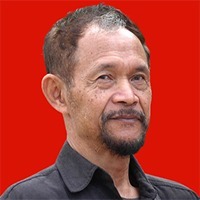Nazareno
Monday, January 11, 2021
arsip tempo : 171419486332.

Every January 9—except perhaps this time of Covid-19—hundreds of thousands of people crowd the streets of Manila. They move, tightly, waving white handkerchiefs, holding up maroon banners, crying “viva! viva!” and following for hours a black statue—a statue of Jesus.
Their worship is impressive, their faith confusing.
This Traslación ceremony is actually not rambling: the huge procession accompanies the stat
...
Subscribe to continue reading.
We craft news with stories.
 For the benefits of subscribing to Digital Tempo, See More
For the benefits of subscribing to Digital Tempo, See More











